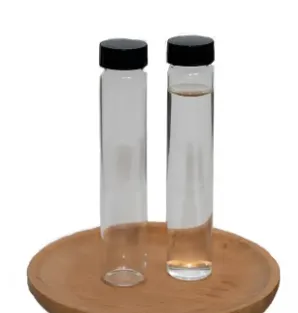Warning: Undefined array key "title" in /home/www/wwwroot/HTML/www.exportstart.com/wp-content/themes/1198/header.php on line 6
Warning: Undefined array key "file" in /home/www/wwwroot/HTML/www.exportstart.com/wp-content/themes/1198/header.php on line 7
Warning: Undefined array key "title" in /home/www/wwwroot/HTML/www.exportstart.com/wp-content/themes/1198/header.php on line 7
Warning: Undefined array key "title" in /home/www/wwwroot/HTML/www.exportstart.com/wp-content/themes/1198/header.php on line 7
- Afrikaans
- Albanian
- Amharic
- Arabic
- Armenian
- Azerbaijani
- Basque
- Belarusian
- Bengali
- Bosnian
- Bulgarian
- Catalan
- Cebuano
- China
- China (Taiwan)
- Corsican
- Croatian
- Czech
- Danish
- Dutch
- English
- Esperanto
- Estonian
- Finnish
- French
- Frisian
- Galician
- Georgian
- German
- Greek
- Gujarati
- Haitian Creole
- hausa
- hawaiian
- Hebrew
- Hindi
- Miao
- Hungarian
- Icelandic
- igbo
- Indonesian
- irish
- Italian
- Japanese
- Javanese
- Kannada
- kazakh
- Khmer
- Rwandese
- Korean
- Kurdish
- Kyrgyz
- Lao
- Latin
- Latvian
- Lithuanian
- Luxembourgish
- Macedonian
- Malgashi
- Malay
- Malayalam
- Maltese
- Maori
- Marathi
- Mongolian
- Myanmar
- Nepali
- Norwegian
- Norwegian
- Occitan
- Pashto
- Persian
- Polish
- Portuguese
- Punjabi
- Romanian
- Russian
- Samoan
- Scottish Gaelic
- Serbian
- Sesotho
- Shona
- Sindhi
- Sinhala
- Slovak
- Slovenian
- Somali
- Spanish
- Sundanese
- Swahili
- Swedish
- Tagalog
- Tajik
- Tamil
- Tatar
- Telugu
- Thai
- Turkish
- Turkmen
- Ukrainian
- Urdu
- Uighur
- Uzbek
- Vietnamese
- Welsh
- Bantu
- Yiddish
- Yoruba
- Zulu
lis . 01, 2024 05:37 Back to list
Exploring the Role and Benefits of Saccharin in Food and Beverage Industry
The Function of Saccharin Understanding Its Role in Our Diet
Saccharin, one of the oldest artificial sweeteners, has been a staple in the world of food and beverages since its discovery in the late 19th century. Initially used as a sugar substitute, saccharin provides a sweet taste without the calories associated with sugar. Its primary function is to cater to individuals seeking to reduce their sugar intake, whether for weight management, diabetes control, or overall health improvement.
Low-Calorie Sweetening
One of the fundamental functions of saccharin is its role as a low-calorie sweetener. Containing no calories per serving, it allows consumers to enjoy sweetness in their foods and drinks without the energy surplus that sugar brings. This is particularly beneficial for those monitoring their caloric intake, offering a guilt-free option that satisfies sweet cravings. Brands often incorporate saccharin into various products, from soft drinks and desserts to baked goods.
Blood Sugar Management
For people with diabetes or those looking to manage their blood sugar levels, saccharin serves as a valuable alternative to traditional sugar. When consumed, saccharin does not raise blood glucose levels, making it a safer choice for insulin-sensitive individuals. The ability to sweeten food without the risk of destabilizing blood sugar can improve dietary compliance for those with diabetes, allowing for greater enjoyment of flavors without compromising health.
saccharin function

Versatile Applications
Saccharin's functionality extends beyond direct consumption. It is often utilized in a wide array of food products, including jams, jellies, and canned foods, due to its stability under heat and over time. This versatility allows food manufacturers to reduce sugar content while maintaining desired sweetness, enhancing the profile of many processed items. Additionally, saccharin is frequently found in sugar-free versions of popular products, extending choices for consumers looking to avoid sugar.
Safety and Regulation
Despite its widespread use, saccharin has faced scrutiny over the years regarding its safety. Early studies suggested potential carcinogenic effects, leading to a significant decline in usage and even a temporary ban. However, subsequent research cleared saccharin of such concerns, and regulatory bodies like the FDA have deemed it safe for consumption, especially in moderation. Today, saccharin is recognized as a safe sweetener, contributing to a balanced approach to dietary choices.
Conclusion
In summary, saccharin plays a significant role in contemporary diets, functioning as a low-calorie sweetener that aids in weight management and blood sugar control. Its versatility allows it to be incorporated into a wide range of products, providing consumers with enjoyable options while adhering to dietary restrictions. As we continue to seek healthier alternatives, saccharin remains a relevant and functional sweetener in our daily lives, helping to satisfy our cravings without the extra calories.
Latest news
-
Certifications for Vegetarian and Xanthan Gum Vegetarian
NewsJun.17,2025
-
Sustainability Trends Reshaping the SLES N70 Market
NewsJun.17,2025
-
Propylene Glycol Use in Vaccines: Balancing Function and Perception
NewsJun.17,2025
-
Petroleum Jelly in Skincare: Balancing Benefits and Backlash
NewsJun.17,2025
-
Energy Price Volatility and Ripple Effect on Caprolactam Markets
NewsJun.17,2025
-
Spectroscopic Techniques for Adipic Acid Molecular Weight
NewsJun.17,2025

